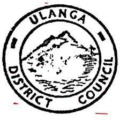About Company
Location & Geography
-
Region: One of six districts in Tanzania’s Morogoro Region, located in the southeastern part of the country.
-
Bordering areas: Bordered by Kilombero District to the north and west, Lindi Region (east), and Ruvuma Region (south).
-
Size & Topography: Covers around 15,751 km² (or ~10,689 km² by some sources), featuring low‑lying floodplains of the Kilombero–Ulanga river valley and upland plateaus rising to ~1,500 m.
-
Rivers & ecosystems: The Kilombero and Ulanga Rivers create East Africa’s largest seasonal freshwater plain, part of the Selous Game Reserve World Heritage Site.
👥 Population & Demographics
-
Population (2022): ~232,900 residents, with a density of ~15 people/km².
-
Ethnic majority: Indigenous Wapogoro people.
-
Religion & culture: Mahenge serves as a Roman Catholic diocese with two-thirds Catholic adherence; local culture ties closely to agriculture and riverine life.
🏢 Administration & Infrastructure
-
Council seat: Located in Mahenge town.
-
Government structure:
-
4 administrative divisions: Lupiro, Vigoi, Ruaha, Mwaya.
-
21 wards, including Chirombola, Minepa, Ruaha, Vigoi, Lukande, and others.
-
Single parliamentary constituency: Ulanga Mashariki (East).
-
-
Connectivity: Roads are largely unpaved; a gravel airstrip is located within the Selous · Kilombero Bridge links to Kilombero District and Ifakara, boosting regional trade.
💼 Economy & Natural Resources
-
Livelihoods: Predominantly subsistence rice and maize farming, fishing, and livestock grazing; small-scale mining (notably around Lukande) .
-
Forestry & conservation: Part of the district lies within forest reserves (~4,927 km²), largely encompassing teak plantations in the valley.
-
Mineral wealth: Rich in gemstones (rubies, garnet, spinel) near Mahenge, and large graphite deposits (~60 Mt at 9.8% purity) with active development projects .
-
Conservation value: Shares part of the Selous Game Reserve, home to elephants, hippos, Nile crocodiles, puku antelope, and endemic species like the Udzungwa red colobus.
🏥 Education & Health
-
Education: ~59 primary schools (26,000+ students, average class size ~40:1), 22+ secondary schools .
-
Healthcare: Served by Mahenge District Hospital, several health centers, dispensaries (~18 public), and local pharmacies.
🌦️ Climate
-
Type: Warm, temperate (Cwa).
-
Rainfall: Bimodal—short rains Nov–Jan, long rains Mar–May with 800–1,600 mm/year.
-
Temperatures: Average monthly range from ~18 °C (July) to ~25 °C (Nov).
🏛️ Governance & Services
-
Council Responsibilities: Oversees poverty reduction, local economic development, water, education, health, and land-use planning.
-
Public info: Official website (ulangadc.go.tz) offers policy documents, contact info, and economic profiles.
-
Development initiatives: Includes community drug administration for disease control and the Ulanga District Support Programme against poverty.
🤝 Connectivity & Outreach
-
Bridge infrastructure: The Kilombero Bridge (384 m, inaugurated May 2018) improved transport links to Ifakara and regional markets.
-
Communication: The council uses radio, local offices, and social media to announce investment opportunities and public programmes .
✅ Summary
Ulanga District Council governs a vast, sparsely populated region rich in rivers, wetlands, agriculture, and mineral wealth. The region combines conservation-focused landscapes with traditional livelihoods. Infrastructure is steadily improving (e.g., Kilombero Bridge), though road quality remains a challenge. Local governance prioritizes education, healthcare, infrastructure, and poverty mitigation, with growing momentum in mining and eco-conservation sectors.



Be a First Reviewer